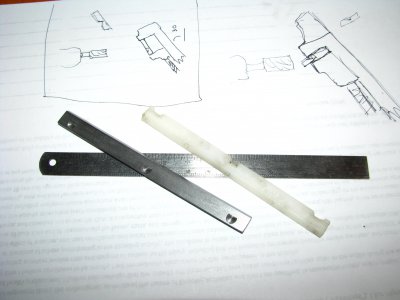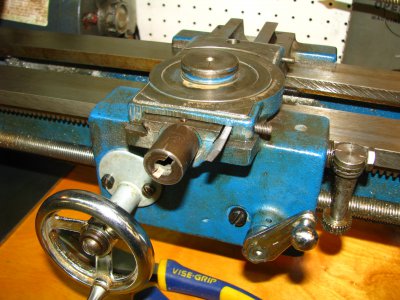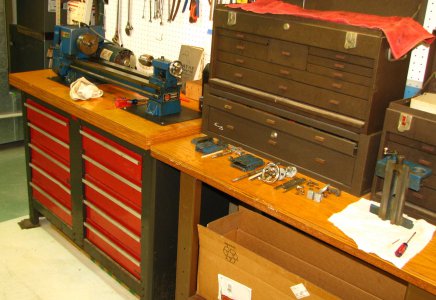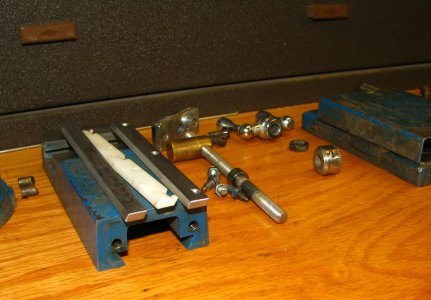I've reassembled the lathe slides and did a too quick test facing. Interesting results.
The reassembly took far longer then I thought, about half that time was spent on the carriage on bed. Redid steps a few times to get the half nuts and the carriage feed gear together. Thankfully I have small fingers and, it seems, patience (as I was also helping a coworker learn to braze). Next up was the carriage cross slide and the first gib I made. Then the tool holder one. These two went as planned but the gib adjustment took a long time for a, currently, AGAP state. I was running out of time so only was able to do a facing on a steel shaft to make sure all worked, which it did.
The steel gibs definitely fit tighter, with less mushy a feel, but now show how poorly the ways are formed (if I have it right). As each slide is moved through it's travel points of tighter and looser movement happens. Could be that a gib screw is too tight and the friction changes as the slide goes through it's range. I suspect that the ways are not as well made as could be. There's rough tooling marks from the cutter in places, no grinding that's obvious, and the wear on the contact surfaces is not evenly distributed along the dovetails/ways. This machine might benefit from a more anal rebuild with scraping or some effort to better finish the sliding surfaces. It seems that the steel gibs have more friction then the plastic and they are rather sensitive to minute adjustment screw changes, very sensitive. I wonder if a better metal, for the gibs, with less friction would help. I ended up with the carriage cross slide and the tool post slide set a bit tight for now. The slop/backlash/rock has been reduced a bunch.
The test facing went well enough. My tool tip wasn't great yet there was no chatter or womp as the tool tip got to the center of the shaft's face. So far so good.
I think I will consider trying brass soon but suspect the low tolerances on sliding surface finish and parallelness of dovetails will stay as a problem now that the gibs don't compensate to the same degree as before.
Photos attached are a close up of the first gib being installed, the obligatory parts spread out one and the two gibs with a plastic one better showing the shapes.
I'll continue this playing and update as I find new stuff out (which will be old hat for many here).
wa5cab- Thanks for the dimensional down load point out. I'm much more of a file to fit guy then a numbers are my path one. I will check the plans out and look forward to a better set of gibs in the futuire, Andy






